Geology, at last
It rained last week, and snow is predicted today and tonight. In fact, the Weather Service is predicting around five inches tonight; I may get a free day of vacation tomorrow. But it was pleasant enough Saturday for me to get together with Gary Stradling and visit the Cerillos Hills.
The Cerillos Hills are an old mining district southeast of Santa Fe. They are the cluster of hills that you see south of I-25 just before descending the La Bajada escarpment to the Cochiti exit on the way to Albuquerque. They’re part of the northern end of the Ortiz Porphyry Belt, a chain of volcanoes that formed around 35 million years ago, in the Oligocene.
The mountains and hills we see today are the heavily eroded remnants of the magma chambers of the original volcanic range. This range was at least the equal of today’s Jemez Mountains, and may have been a precursor to the Rio Grande Rift, the great crack in the earth’s crust that stretches from central Colorado to the El Paso area. The Rio Grande Rift is where the Colorado Plateau is slowly pulling away from the rest of North America, as the continent drifts onto the East Pacific Rise and is uplifted and stretched.
Debris flows off the volcanoes formed the Espinaso Formation, which underlies Espinaso Ridge and other areas around the Cerillos Hills.
Gary and I started late in the day, since we were assisting with a funeral at our church until well after noon. We got to Cerillos around 3:30 or so, visited the small museum (which has just a few displays so far), then drove into the hills for a short hike around some of the mine works. The trail begins with steps up from the main road.
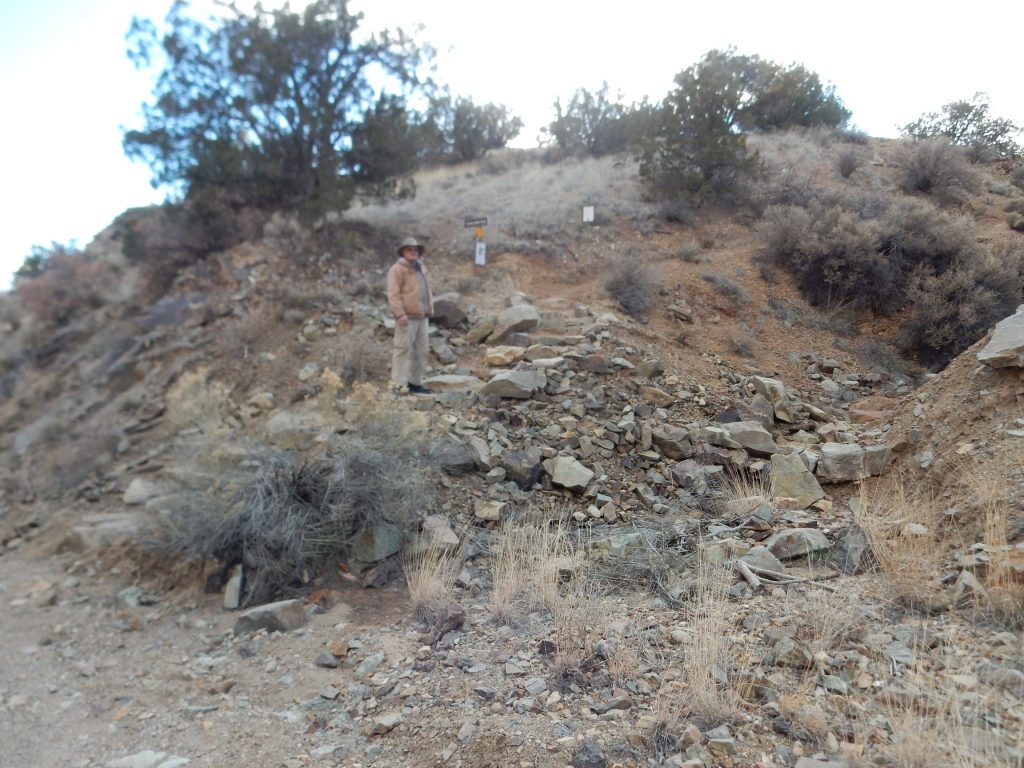
We chose this particular trail because it has a fair number of mine works along a reasonably short trail; we had only limited time until sunset and Gary has some neuropathy in his feet. Gary spotted what looks like a fault trace across the main road.
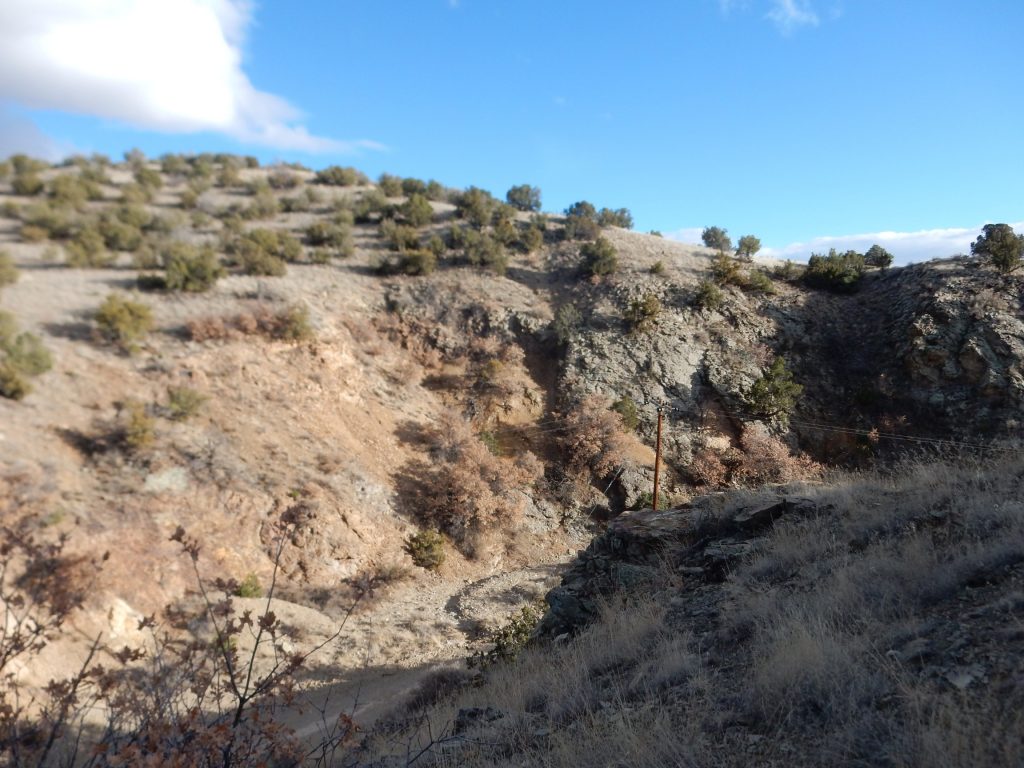
The fault trace, if that’s what it is, is just right of center. This area is crossed by faults, and the faults tend to be good places to find valuable ores. They mark zones where mineral-saturated fluid from the magma chamber cooling below penetrated the overlying rock and deposited its mineral load.
Most of the ores of the Cerillos Hills (and of the Ortiz Porphyry Zone generally) are of incompatible elements. These are chemical elements whose dissolved ions have a different combination of electrical charge and radius than the more common elements. Thus, when common minerals crystallize from magma, the incompatible elements don’t fit into the crystal structure of these minerals, and become concentrated in the remaining fluid. This is the fluid that makes its way upwards to deposit its unusual elements as ores.
The first minerals mined at Cerillos were galena and turquoise. Galena, a bright silvery lead ore that often contains silver, was crushed to a powder by ancient Americans to make a glaze for pottery. It may also have been used as a cosmetic, but that’s a guess; there would be no archaeological traces of such a use. Turquoise, a sky-blue to bluish-green copper aluminum phosphate, was particularly prized for jewelry. Such jewelry is a common element of what appear to be offerings to the gods found around the Four Corners area. Turquoise from the Mount Chalchihuitl open pit has been found as far away as Mexico City, based on its unique chemical signature, and it is believed that this mine was the largest open pit mine in the New World when the Spanish arrived.
The Spanish discovered the galena deposits in the hills and began mining for silver. One end of their shaft is the first mine works we encounter on our hike today.
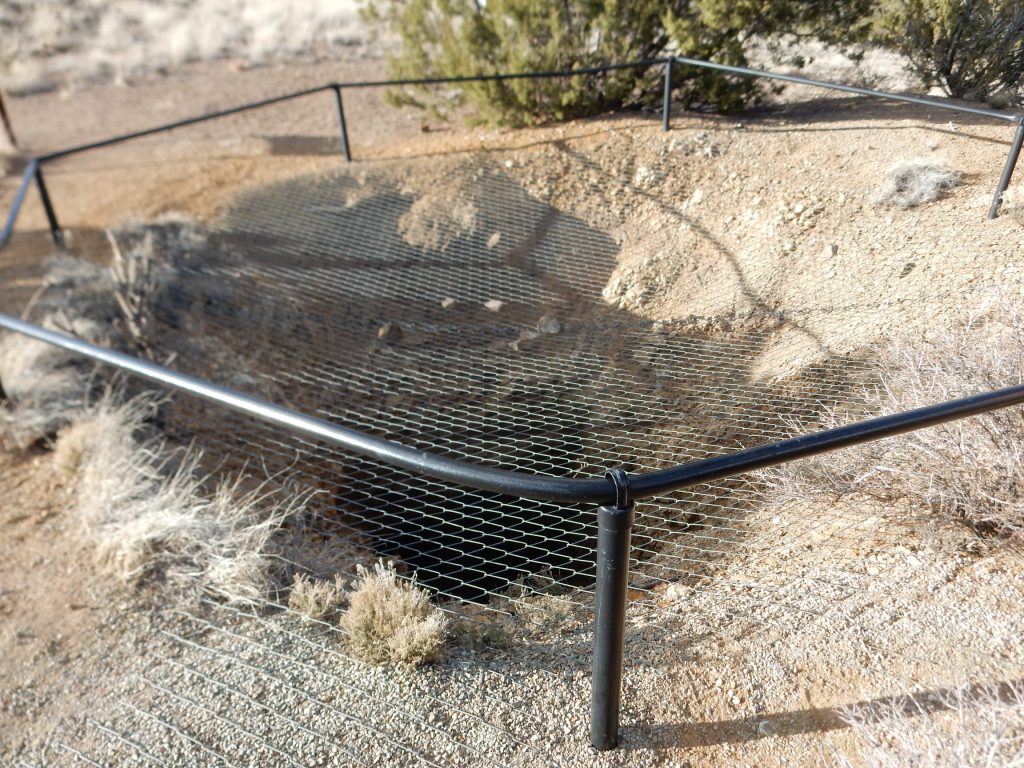
The signage for this mine is, alas, a bit silly. It purports to speak from the point of view of the mine and describes its feelings at being exploited by the Spanish and then the Anglos. I don’t have a lot of patience for that kind of thing. But the shaft itself is fairly impressive.
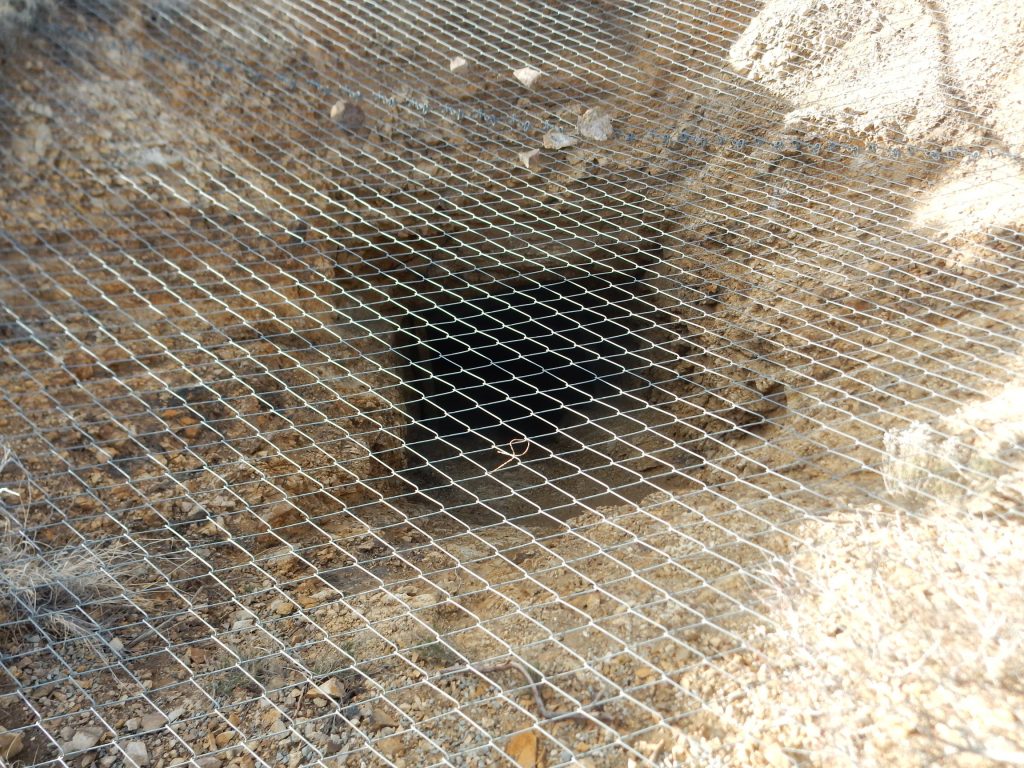
The shaft goes down a long way. Gary suggested we bring a laser pointer next time, to get a better feel for its depth, and that seems like a good suggestion.
The view in the evening light was sometimes lovely.
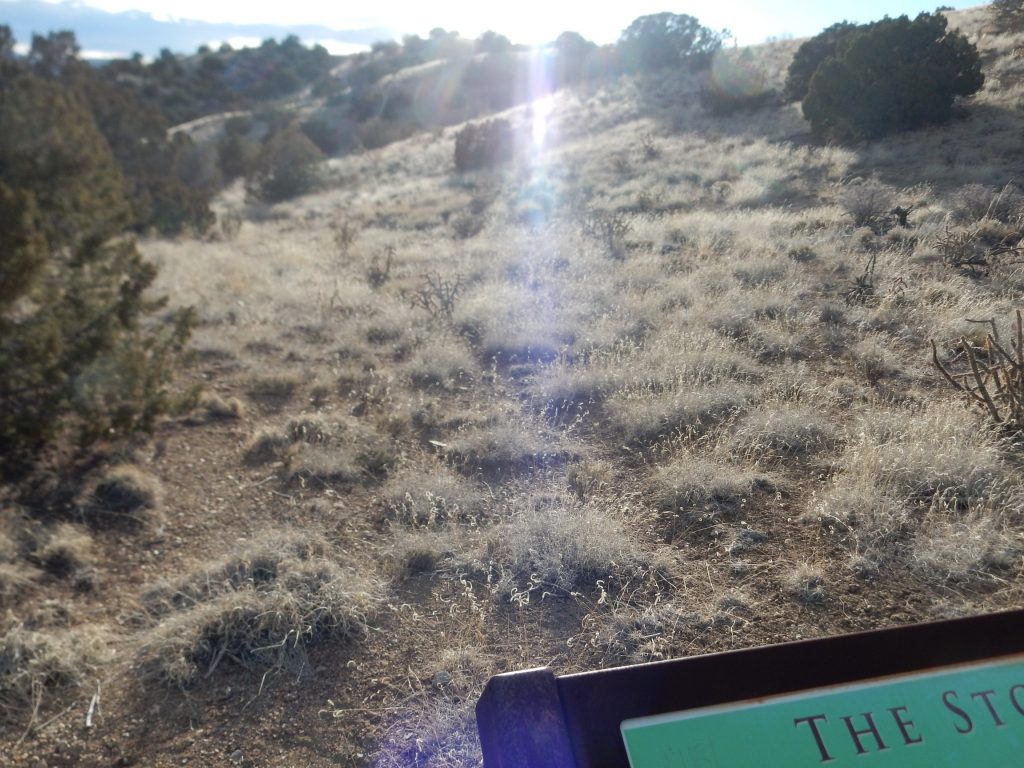
Nearby is a shallow prospect. Gary got down into this and looking at the rocks, which were somewhat unusual for the area. Everything we’d seen so far was some variation on monzonite, an intrusive rock moderately rich in silica with a balance of alkali and plagioclase feldspars. The rock here looked a lot like coarse microcline feldspar with some manganese deposits. I can see why it was prospected, though there’s no indication of serious mining. But more on that shortly.
We cut across country for a short distance, finding an area that looked a lot like tailings. Heading up slope brought us to the next mine, a rather shallow prospect with not that much in the way of tailings. The sign here (sorry, didn’t think to photograph) explained that a lot of the prospects were never seriously developed; instead, there was vigorous speculation in mining rights for mines that never had much prospect of producing much actual ore. It was not so different from the famous Dutch tulip craze.
A nice panorama to the south.

At left, the small mesa is Cerro Pelon. The geologic maps identifies it as a sill, a layer of magma that penetrated between existing rock layers and cooled. The layers above the sill have been eroded away, but the still is resistant enough to for a mesa cap.
At right are the Ortiz Mountains. These have been mined for gold relatively recently, with one mine operating into the 1980s. We have plans to go take a look later.
To the northeast is what looks a little like a tailings pile.
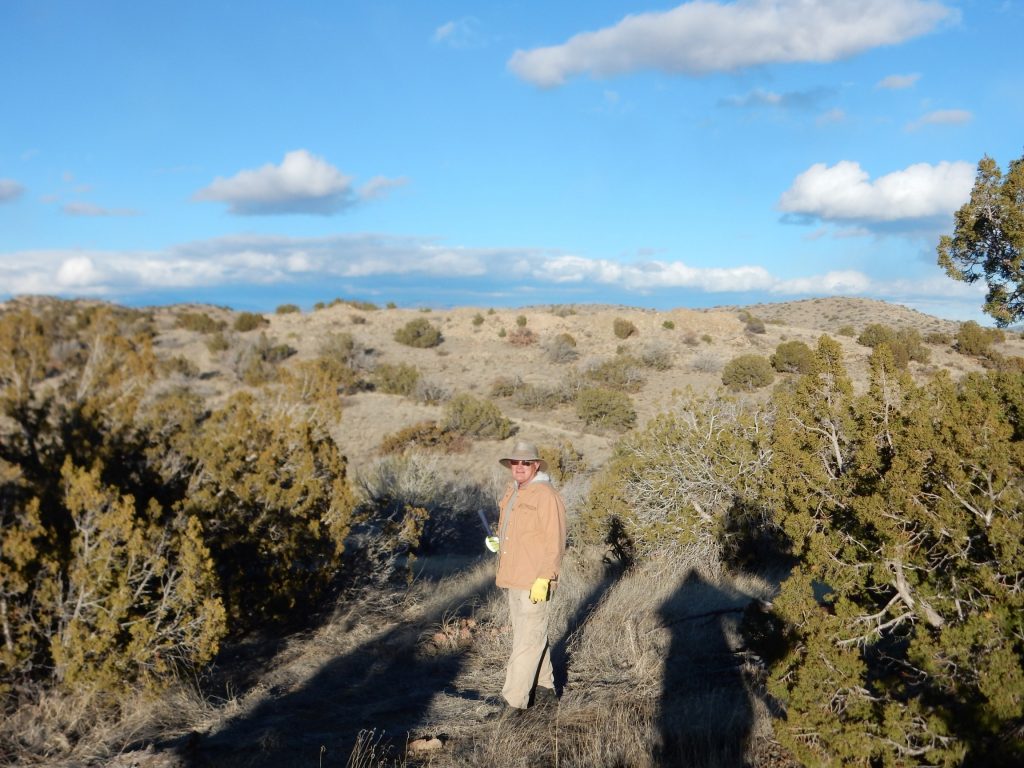
I speculate that this is tailings from Mount Chalchihuitl. Half right; after I get home, I will discover from my coordinates and with a little help from Google Earth that this is some kind of mining works, but not Mount Chalchihuitl itself.
We continue north towards Grand Mountain, the highest point in the Cerrillos Hils.
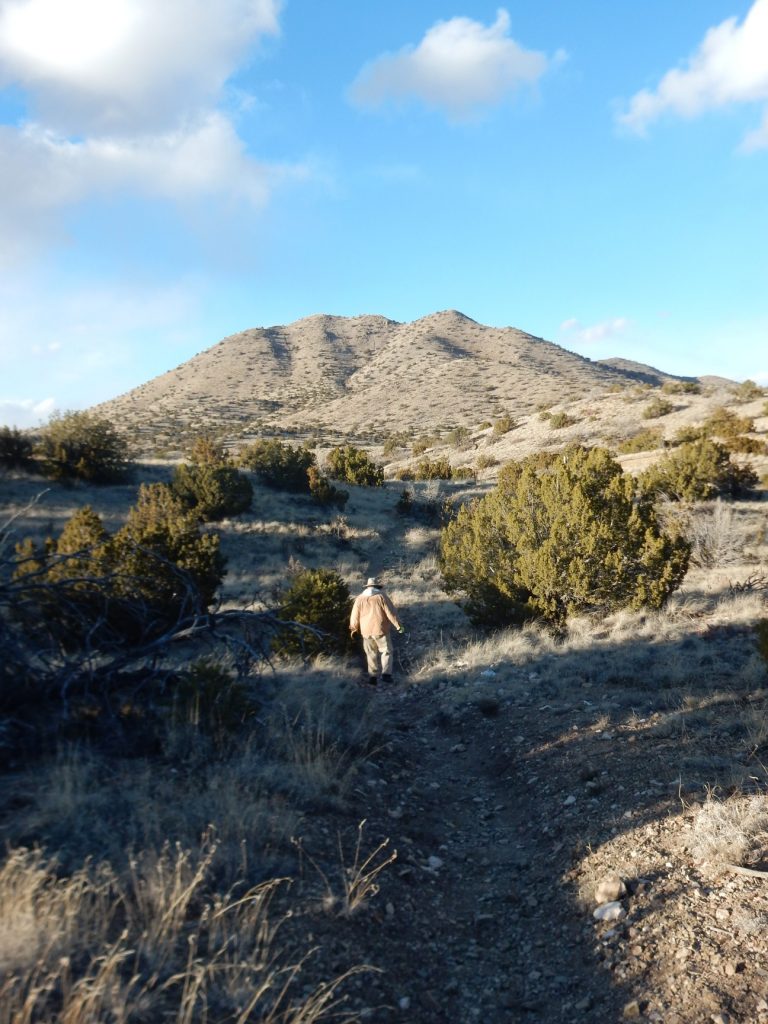
“We don’t want yer kind here.”
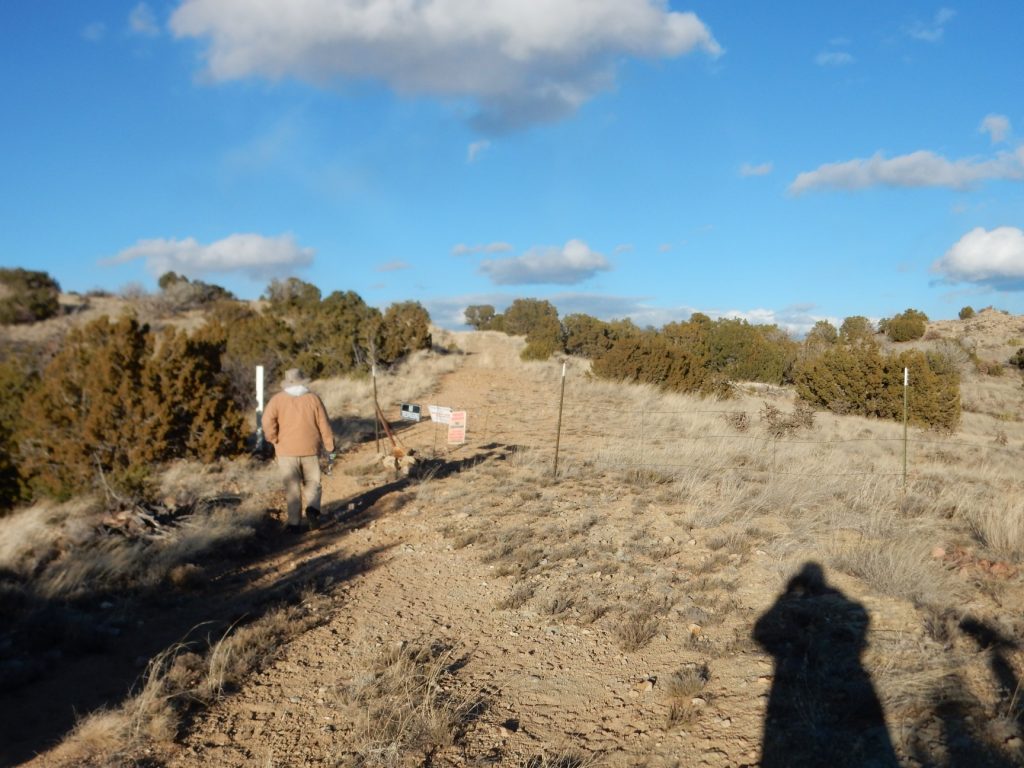
We reach La Mirador, the lookout point at the end of the trail. The light is bad for photography by now, and I’ve been here before. However, Gary and I both enjoy the view.
On the way back, we come to the Pride of the Camp mine. This was apparently mostly a manganese mine.
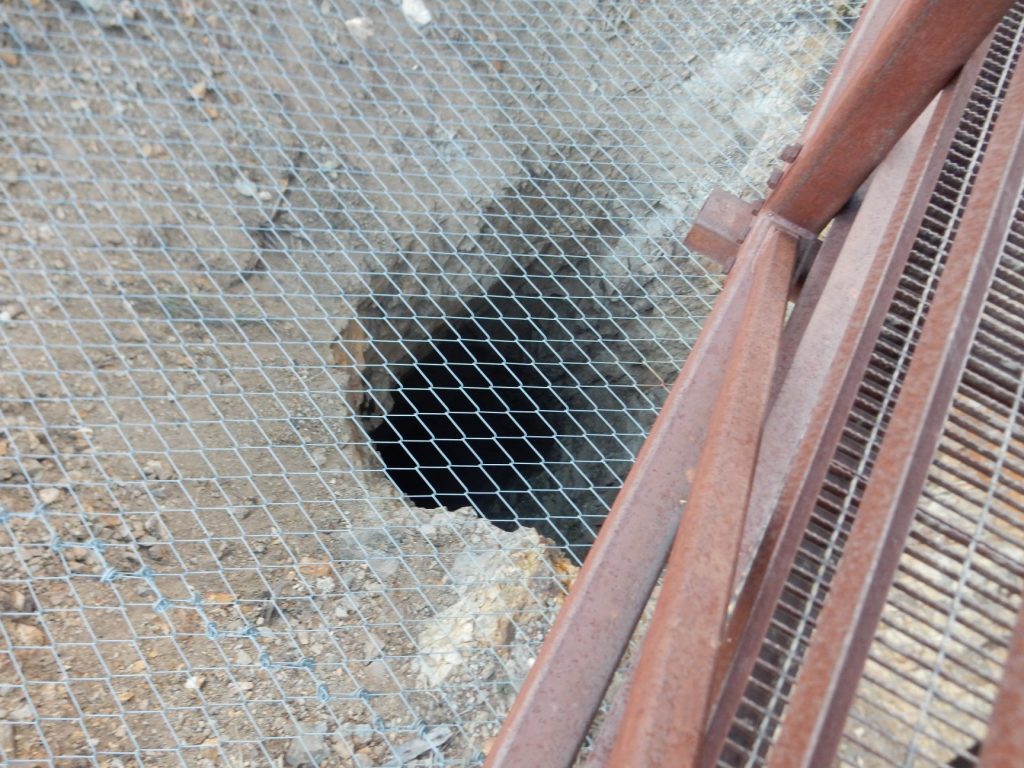
The signage explains that manganese is invaluable for producing high-quality steel. I will add that it’s also one of the few compatible elements mined here; manganese ions are similar to iron ions in charge and chemistry and are usually incorporated into iron minerals, but here processes were at work that managed to separate out and concentrate the manganese. How that happens is something I’ll have to read up on.
The signage also describes how the four years of frenzied speculation on mining claims collapsed: The Territorial Legislature changed the mining laws such that you had to actually do some serious digging to retain a mining claim. The speculators didn’t want to actually mine stuff; they wanted to make money speculating on the claims.
One last mine.
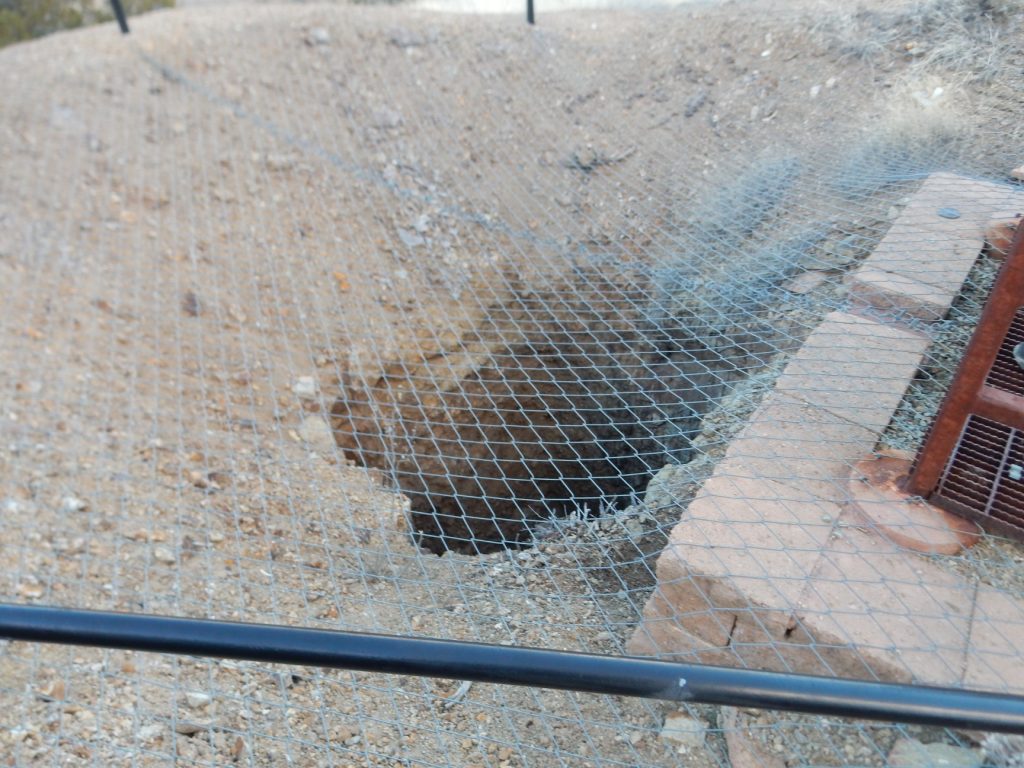
Gary and I were so busy talking economics and politics at this point that I don’t remember what this mine was called or what was mined.
One more beautiful sunset view.
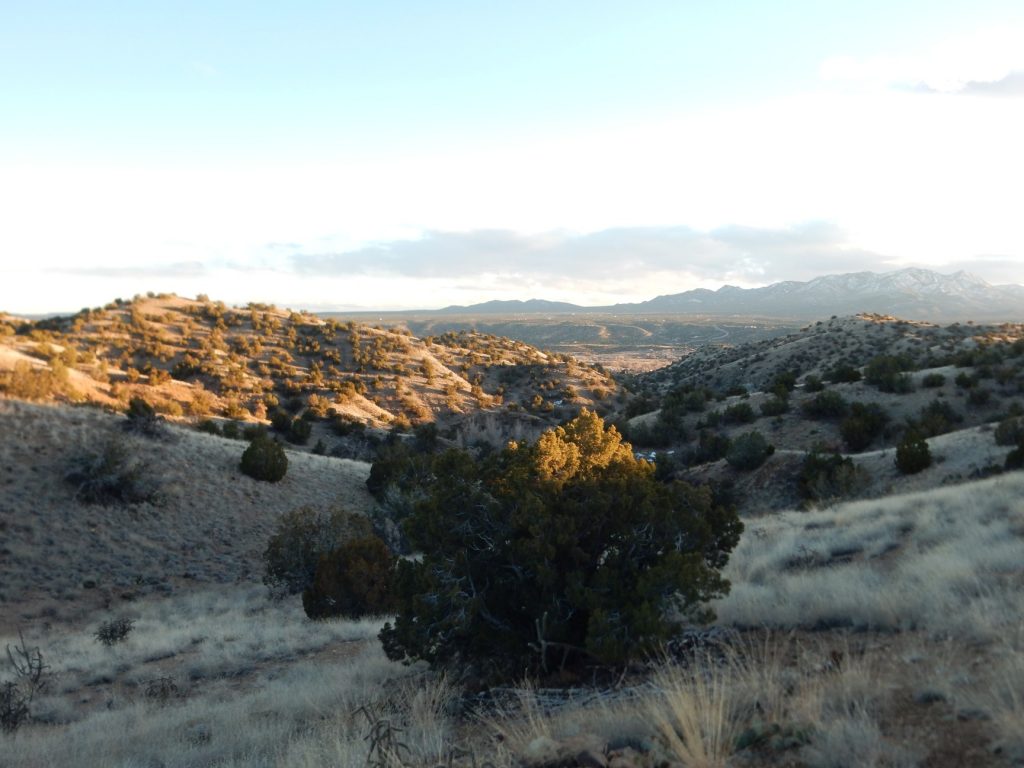
We then drive along Goldmine Road to where it is gated off. By an astonishing coincidence, Goldmine Road leads to a gold mine, not presently active but potentially active in the future, and they aren’t eager for visitors.
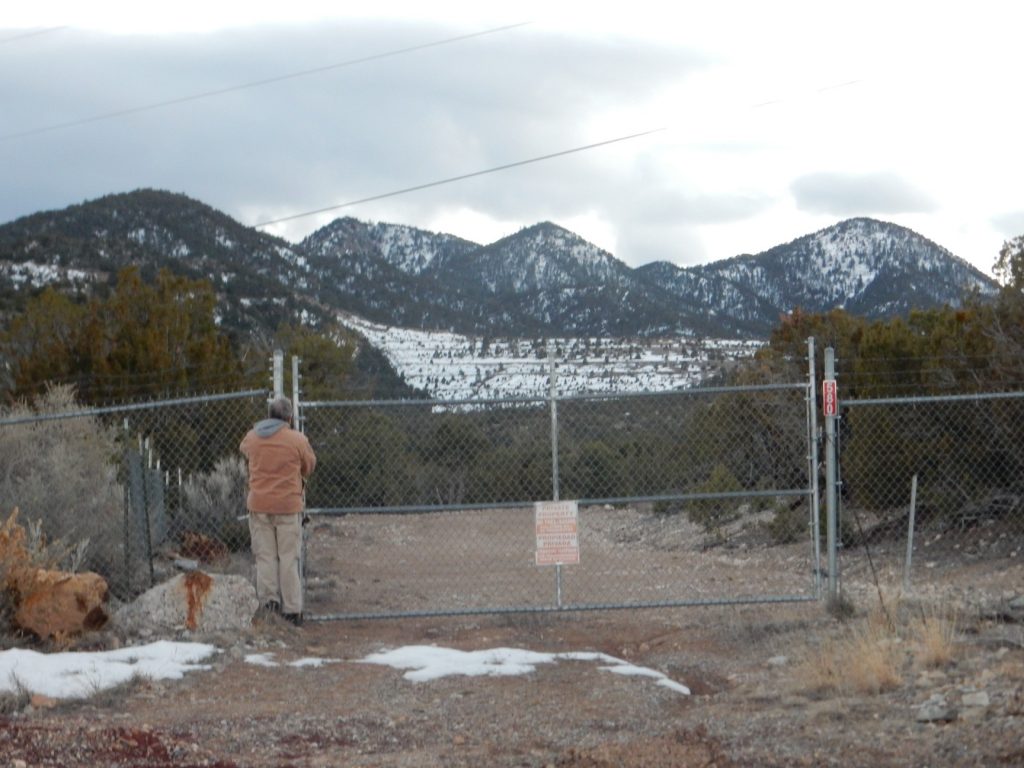
The snow-covered area on the mountainside, just above the gate, is part of the mine works. I’m not sure if it’s a tailings pile or part of the open pit itself. This is the Cunningham Hill Mine, which first opened in 1828. The Cunningham Hill mine was most recently operated by Consolidated Gold Fields, which began open pit mining in 1973. Some 7 metric tons of gold (250,000 ounces), with a value of about $300 million at March 2017 prices, was extracted before the mine was closed again in 1986. Subsequent attempts to reopen the mine have foundered over environmental regulations and the fluctuating price of gold.
Would love to visit the works themselves, but doubt that could easily be arranged.
There is allegedly a botanical garden somewhere here.
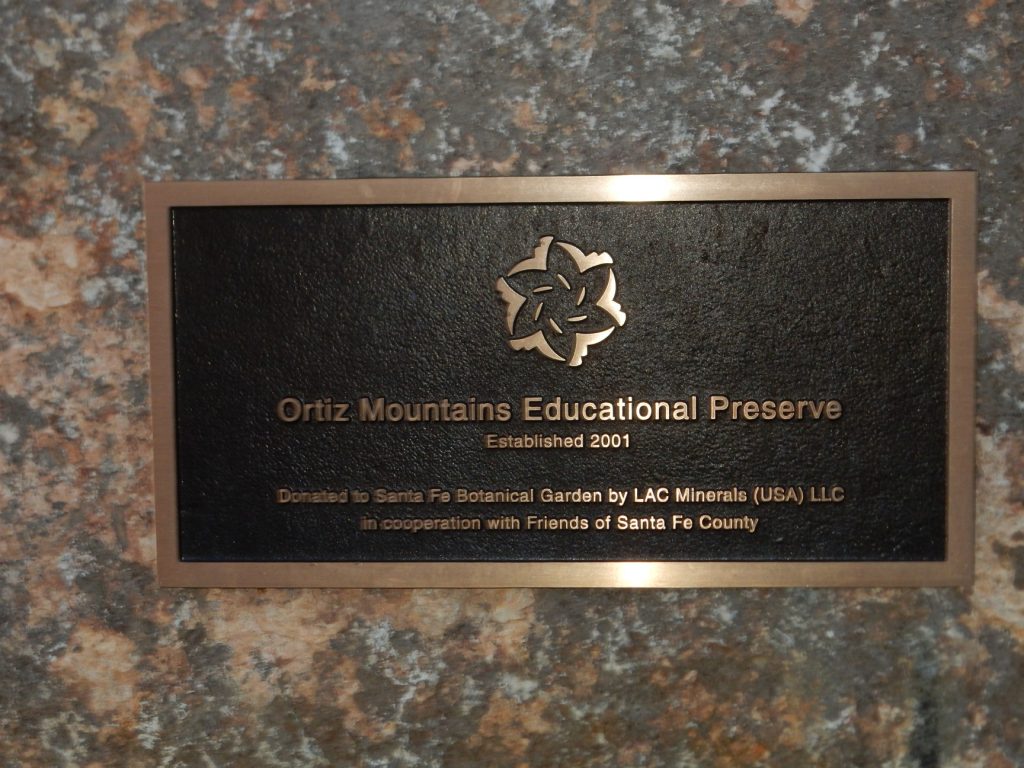
I saw no obvious sign of any preserve, but then it might not have been obvious.
… Wait, what’s Google Earth for, anyway? I discover that the mine works we can see from this point are, indeed, a tailings pile on the north rim of the open pit.
We briefly consider stopping at the Devil’s Throne on our way out, but it is already after sunset and we decide to do it sometime when we can appreciate it properly under daylight. I cannot resist tweaking Gary, who is an even more staunch conservative than I am: I note that it is not actually a gold-plated toilet.
The ich seems to be defeated, for now, and the fish in the display tank all seem happy. I attended the Albuquerque Temple Friday and then looked for a place to eat before beginning shopping for fish stuff.
I planned to start with the Clark’s Pet Emporium on Menaul, and this was a route I hadn’t scouted for lunch places before. There was a Panda Express that would have been … adequate … but then I spotted a hole-in-the-wall Chinese restaurant just across the parking lot. This turned out not to have a lunch buffet, alas, but it was a genuine mom-and-pops, with “Mom” shuffling slowly over to take my order and speaking with delightfully broken English as I communicated my desire for kung pao chicken with lo mein instead of rice. (Lo mein is marginally less hard on my pancreas.) She then slowly shuffled off to the kitchen and shouted instructions in what I took to be Cantonese. (I don’t speak Mandarin, but Cindy used to, and I think I can tell the difference.) Two more customers arrived and the son, whose English was flawless except for a slight stammer, took their orders. Soon “Mom” came out with a large dish of lo mein, followed a few minutes later by a healthy serving of kung pao chicken. I devoured both, deciding my pancreas would just have to fend for itself, this once. “Mom” was startled when she came back with the takeout boxes and found there was nothing left to take out. I left a sizable tip.
Then to Clark’s. I pick out a big piece of driftwood (actually a grape vine that boasts of being sandblasted and heat treated and chemical-free, as if that was possible); they also have the Vallisneria I am looking for. Crep, there are guppies in the tank. They looked healthy, happy, and fecund, but there’s always a risk of parasites in a plant tank that also has fish. The store did not have Siamese algae eaters, but the clerk phoned the Lomas store and ascertained that they did.
I stopped by the Petsmart on Wyoming on my way. It seems better run than most. Alas, they have no Siamese algae eaters either, but I get some frozen bloodworms as a treat for the fish and pick up some spare filters for the quarantine tank. Then off to Lomas; the algae eaters are stiff at $8 a fish, but they look healthy. Also, they look more like flying foxes than algae eaters, but the two are very similar and I’m not going to find the exact species anywhere else in New Mexico. Crep, the bag with the fish feels cold; did the clerk actually fill it from the tap? No, I saw him fill it from the tank. Must just be a colder tank than I’m used to; mine has been cranked up to fight ich. I make my purchase, pop the fish in the thermos box, and head home.
Check my sugar on arrival, wondering if all that lo mein has spiked me to 140 or better. No; 108. Assuming this cheap meter is giving me a meaningful number, my pancreas did well. Then I pop the Siamese algae eater bag into the quarantine tank, to equalize temperature. Go online and look up advice on acclimatizing fish for a new tank: Bottom line is that “drop and plot” (dump the bag through a net and plop the fish straight in the tank) seems to work just as well as elaborate slow acclimation. I decide to take my walking exercise and “plop and drop” when I get back. The fish scramble for the bottom and race around the (rather small) quarantine tank; crep, hope they’ll not stress out and die.
Next is to disinfect the Vallisneria, since they came from a tank with fish in it. Advice online is to dip for five minutes in 3% hydrogen peroxide. Crep, that’s straight out of the bottle! Well, the plants arent’ super expensive, so here goes nothing. The plants fizz merrily in the peroxide bath, I time five minutes, then rinse thoroughly and plant them in my display tank.
Now for the big project: I have a rather empty looking tank,
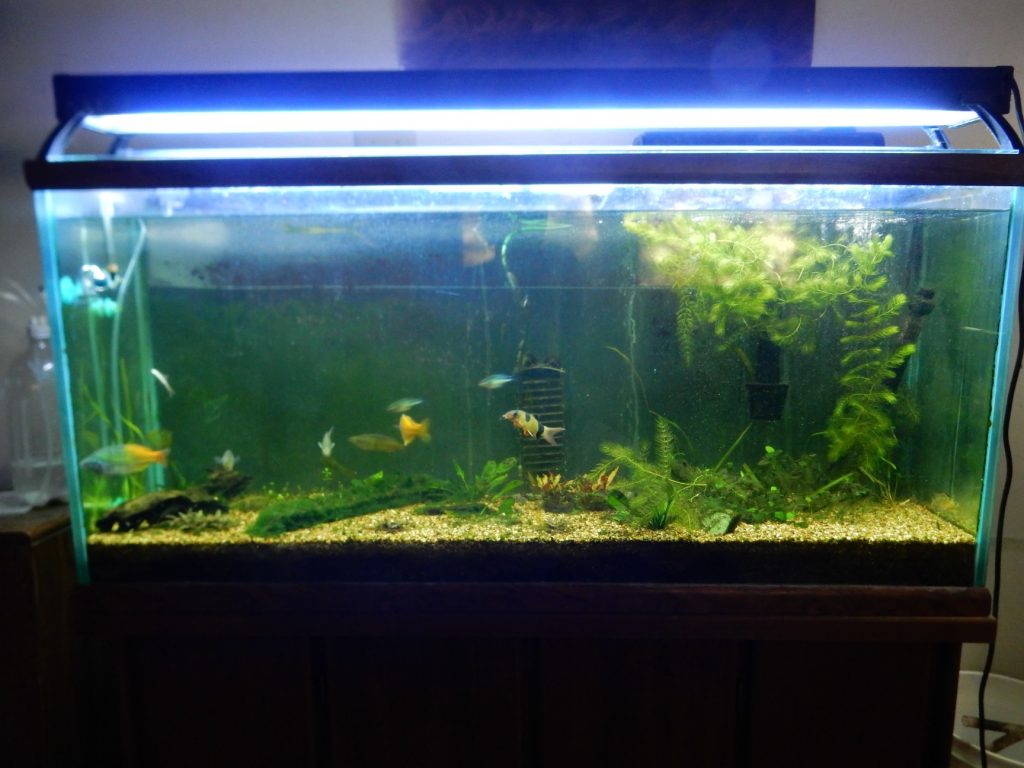
which I wish to decorate with a large piece of “driftwood”:
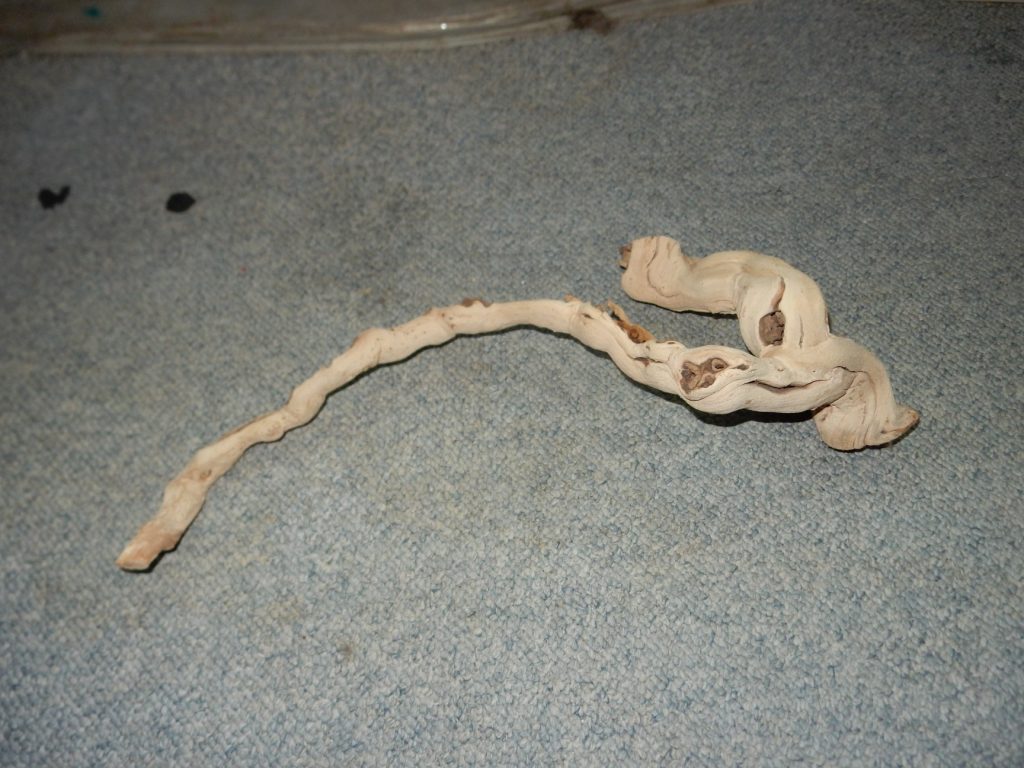
With a new tank, I’d silicone it securely in place. But this is a running tank. My solution:
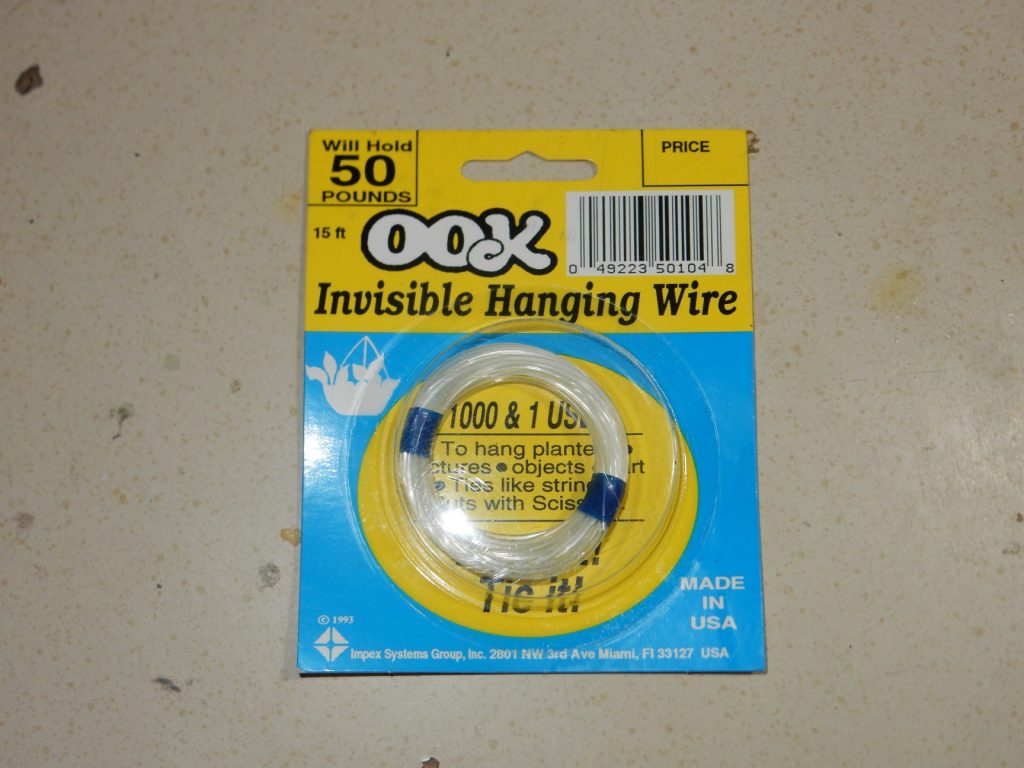
I’ve had this sitting around for fifteen years, from a project Cindy talked me out of, and I finally have a use for it. I’ll let the stump end of the driftwood sit on the tank bottom, and suspend the other end of the driftwood from the center support of my tank using the nylon line.
Except for one unanticipated problem.
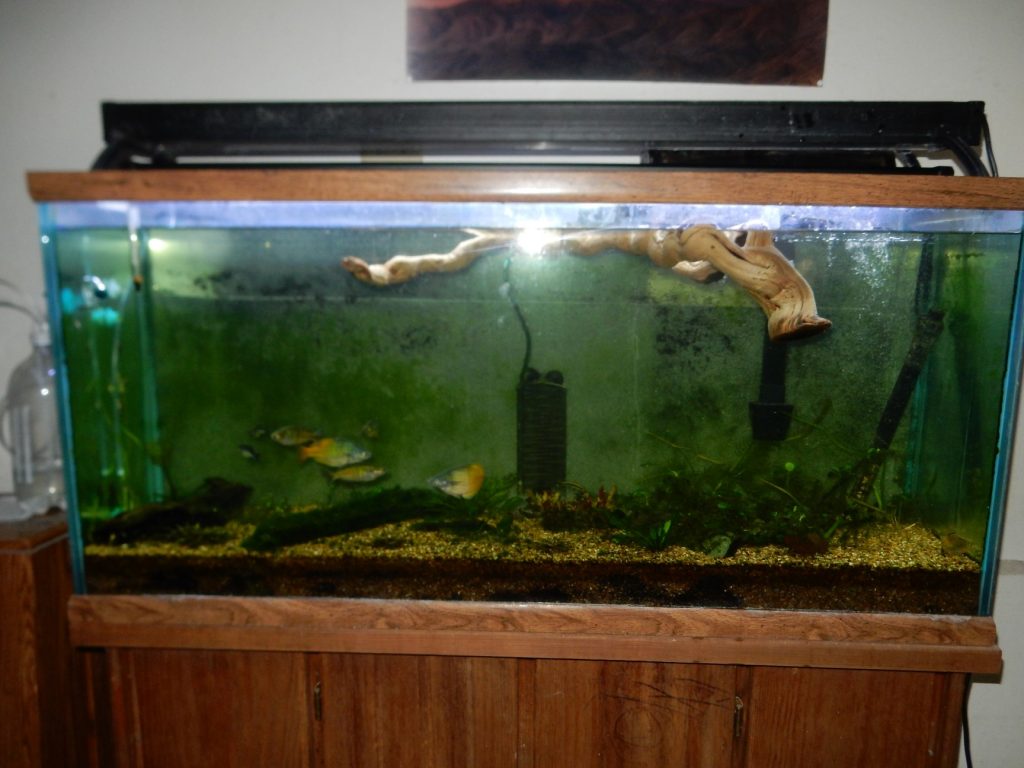
The driftwood is dry enough that it does not sink. Well, crep. I consider. It’s barely above the surface; it won’t have to soak much before it’s heavier than water. I decide it’s time for my walk.
Saturday after the funeral, I come home to find the driftwood sunk to the bottom. I start looking at how to string it up, then consider. The invisible line is going to be a hazard to a fast-moving fish, and, y’know the driftwood actually looks kind of good where it settled on the bottom. Just a few adjustments needed and it’s great. I decide to go with that.
The new fish are still alive, but nervous They seem uninterested in food and scurry to the back of the tank whenever I approach. Crep. On the other hand, the fish in the display tank are ecstatic when I give them their first cube of frozen bloodworm.
Sunday I come home from church, and find that my driftwood has grown a fur coat.
It’s actually kind of cool looking. It looks exactly like fog drifting along the surface of the driftwood. It’s probably actually some kind of bacterial bloom; the fish and plants seem quite untroubled by it, so I’m letting it be. It will probably disappear on its own in a few days.
And the Choral Society concert goes well. I slightly muff one solo line but otherwise do not screw up. I’m a slightly better than average amateur singer rather than any kind of professional singer, so that’s as much as I can hope for.
